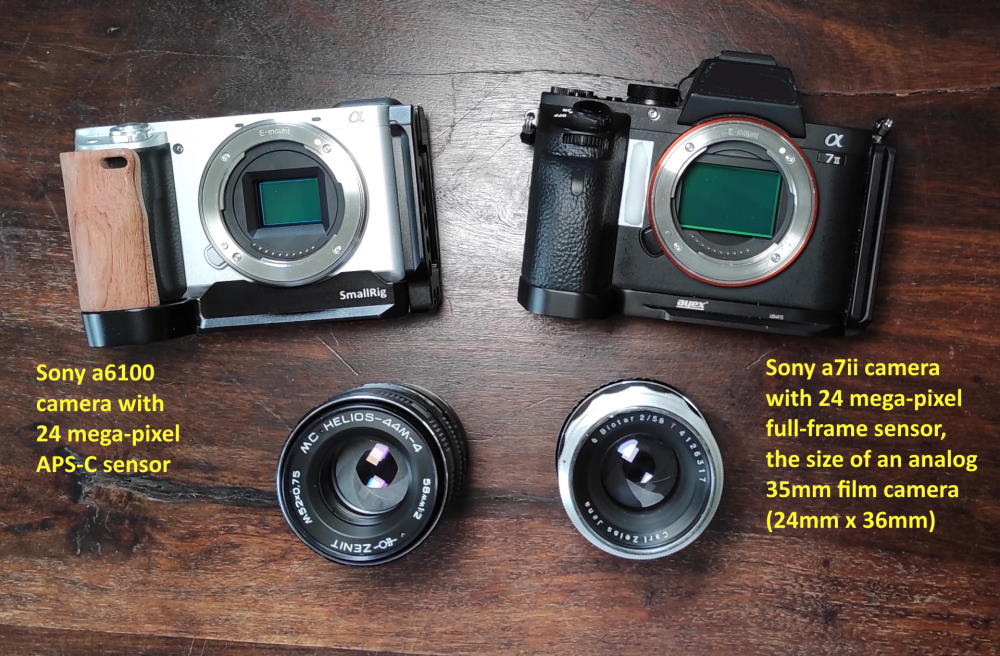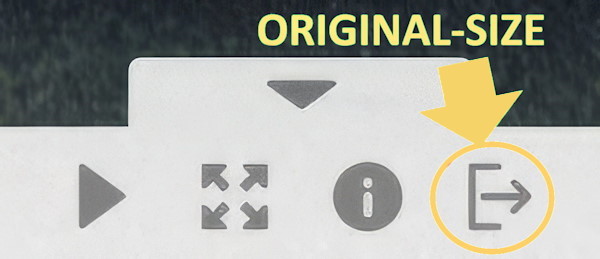
In my opinion, the following photos quite nicely answer the following question: Are the German Carl Zeiss Biotar and Russian Helios-44 58mm f2 lenses of any use when adapted to full-frame and APS-C digital camera bodies?
When German and Russian Biotar type 58mm lenses are used on a Sony a6100 camera with an APS-C sensor, a crop-factor of 1.5 applies. That makes the field of view almost the same as a 85mm portrait lens used on a 35mm equivalent full-frame camera like the Sony a7ii. The good thing using those Biotar type lenses with an APS-C sensor is, that the lower performing corners of the lens are not used, but otherwise the sensor pixel density is higher.
When you click on an image in the galleries, following buttons will allow you to select some features. Use Original-size to watch the photo in full resolution:
Slideshow | Fullscreen | Image-Info | Original-size
Comparison: Photos of Carl Zeiss Biotar and Helios-44 58mm f2 lenses adapted to a Sony a7ii full-frame camera and a Sony a6100 APS-C camera
Let’s have a look at some photographs of classic cars. These were on show at a former Echelon and NSA satellite tracking station compound in Bad Aibling, southern Bavaria, on the 31st of July, 2021.
These photos demonstrate that the Russian Helios 44M-4 58mm f2 lens for EUR 60 delivers the same image quality and bokeh as the Carl Zeiss Biotar 58mm f2 lens for EUR 250, and both lenses performed well when shooting them on a Sony a6100 camera with a smaller APS-C sensor.
Read more about the origin and history of the Carl Zeiss Biotar and Helios 44M-44 58mm f2 classic lenses here
Swirly Bokeh? The legendary Zeiss Biotar 58mm f2 vs. the Russian copy Helios 44M-4 58mm f2 lens
Rundown
The image quality and bokeh of the Carl Zeiss Biotar 58mm and Helios 44M-4 58mm classic lenses barely differ. The image rendering and bokeh of these lenses are different, depending on whether they are adapted to a Sony a7ii full-frame camera or to a Sony a6100 APS-C camera (the sensor size of an APS-C camera is only 2/3 of a full-frame sensor). Nevertheless, the image rendering and bokeh difference is much less than expected if the distances to the object and background are increased compared to a full-frame camera.
Both classic Biotar type lenses proved able to deliver good images, with a beautiful image rendering character and bokeh when adapted to the Sony a7ii full-frame and a6100 APS-C cameras. The Russian Helios 44M-4 58mm f2 lens convinced with an excellent price/performance ratio (approx. EUR 60).
Thanks to my friend Randolph for shooting almost all photos with the full-frame Sony a7ii camera, while I was shooting with the Sony a6100 APS-C camera. And thanks to Sergii for lending his Helios 44M-4 lens.
Learnings:
- It might be wiser to use an inexpensive, small and lightweight APS-C camera for EUR 600 with a EUR 60 classic Helios 44M-4 58mm f2 prime lens instead of a EUR 2,000 mirrorless full-frame camera with a plastic-is-fantastic, slow and characterless zoom kit lens, which might have an ugly onion ring bokeh.
- A quick manual focus for shooting classsic cars at a car show with the German and Russian Biotar type 58mm f2 lenses was easy to accomplish with the Manual Focus Assist and Focus Peaking features of the Sony cameras.
- Both Biotar lenses show a characterful wet-on-wet bokeh on the Sony a7i full-frame and Sony a6100 APS-C cameras. Both lenses are known for their swirly bokeh, but the swirly bokeh shows only under certain conditions, which were not met in the photos above.
Read more about the Wet-on-Wet Bokeh
Useful car show photo tips from Chelsea & Tony Northrup